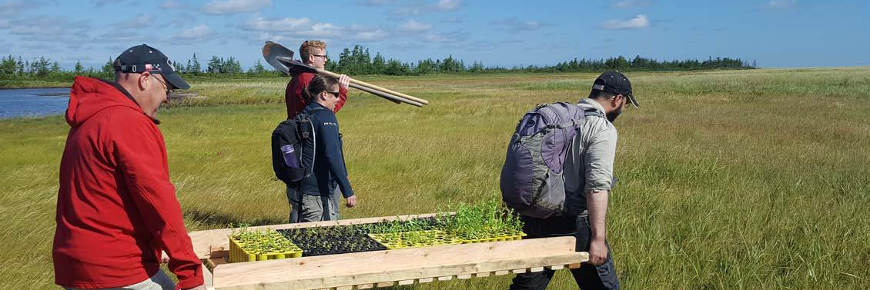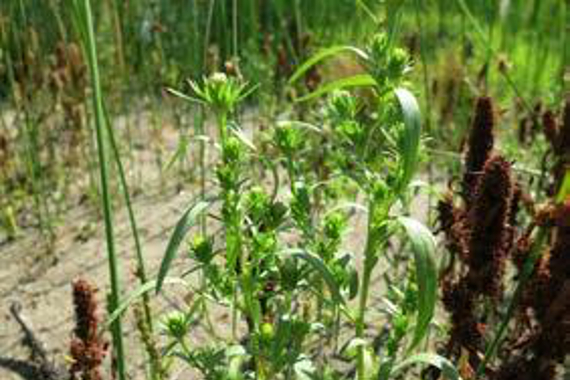
Pallets of threatened Gulf of St. Lawrence aster are transported for planting at Le Barachois salt marsh restoration site. Photo: © Philippe St-Onge
A blooming return
Restoring the Gulf of St. Lawrence aster to Kouchibouguac National ParkFootnote *
What’s the issue?

The Gulf of St. Lawrence aster is found nowhere else in the world but New Brunswick, Nova Scotia, Prince Edward Island and Quebec’s Magdalen Islands. The plant, which thrives in salt marsh, has declined in recent years because of habitat loss. The reasons are many: shoreline development, increased erosion, rising sea levels and disturbance from recreation. While the species once could be found in Kouchibouguac National Park, a storm in 2000 smothered the plants under sand so deep that the seeds were unable to germinate and the population winked out. This rare aster has not been seen in the park since then.
What’s our approach?
- Collaborate with botanists from the University of Prince Edward Island and the Atlantic Canada Conservation Data Centre to recover this rare plant.
- Transplant at least 640 greenhouse-grown plantlets at four sites over a two-year period in Kouchibouguac National Park.
- Develop and implement a monitoring plan to assess recovery of the species.
- Engage Canadians using new and traditional media, and provide visitors with meaningful opportunities around the recovery story of this species.
What’s been accomplished?
- In collaboration with expert partners, successfully germinated plants in a greenhouse.
- Surveyed habitat appropriate for seed or transplant plots and inventoried several hundred potential sites; transplanted 800 plants at 14 sites and scattered 30,000 seeds in 31 additional sites (2016 and 2017).
- Recorded survival of transplanted individuals at 95 percent in 2016 and 60 percent in 2017, and observed 1,330 mature plants in 2017 at the seeded plots – the first time in more than 12 years that this plant regenerated naturally in the park!
- Delivered interpretation programs at the park and interviews to national media to teach visitors and Canadians about the recovery of the Gulf of St. Lawrence aster.
- Date modified :